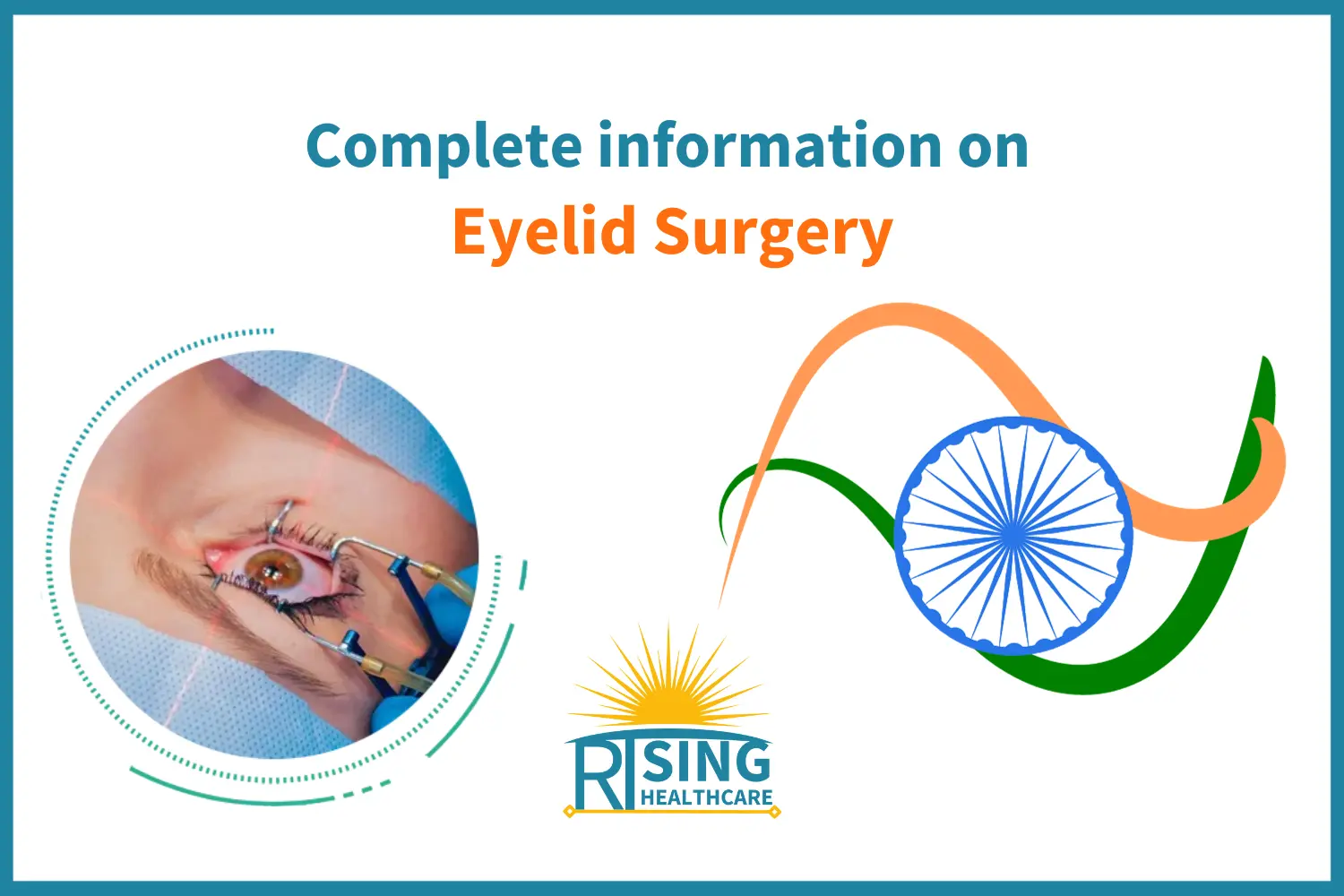
Eyelid Surgery: Understanding Blepharoplasty and Double Eyelid Surgery
Introduction
Your eyes are often called the windows to your soul, and they play a significant role in conveying your emotions and expressions to the world. However, factors like aging, genetics, and other lifestyle factors can cause changes in the appearance of your eyelids. These changes can sometimes lead to discomfort or a desire to enhance your overall facial aesthetics. This is where eyelid surgery, also known as blepharoplasty or double eyelid surgery, can make a difference.
In this comprehensive guide, we will delve into the world of eyelid surgery. We’ll explore what blepharoplasty is, what double eyelids are, and how double eyelid surgery can help you achieve the look you desire. Whether you’re considering these procedures for medical or cosmetic reasons, we’ve got you covered with all the essential information.
Contents
Understanding Blepharoplasty
Blepharoplasty, often referred to as eyelid surgery, is a medical procedure that aims to rejuvenate and enhance the appearance of the eyelids. It’s a common surgery chosen by people for both cosmetic and functional reasons.
1.1. Why Choose Blepharoplasty?
There are several reasons why someone might opt for blepharoplasty:
- Aging: As we age, the skin around our eyes can lose elasticity, causing sagging and wrinkles. Blepharoplasty can help remove excess skin and fat, resulting in a more youthful appearance.
- Impaired Vision: In some cases, excessive skin on the upper eyelids can obstruct one’s vision. Blepharoplasty can correct this issue, improving both vision and aesthetics.
- Cosmetic Enhancement: Many individuals seek blepharoplasty to achieve a more alert and youthful look, enhancing their overall facial appearance.
1.2. The Blepharoplasty Procedure
During a typical blepharoplasty procedure, the surgeon makes incisions along the natural creases of the eyelids to minimize visible scarring. They then remove excess fat and skin and may reposition or tighten underlying muscles and tissues. The incisions are carefully closed, and any sutures used are typically tiny and well-concealed.
Recovery after blepharoplasty may involve some swelling and bruising, but this usually subsides within a few weeks. The final results become more apparent as the healing process continues.
Double Eyelids - A Cultural Perspective
Before diving into double eyelid surgery, it’s essential to understand what double eyelids are and why they hold cultural significance in certain regions of the world.
2.1. What Are Double Eyelids?
Double eyelids, often known as “double eyelid creases,” are characterized by a visible crease or fold above the upper eyelid. This crease creates a distinct separation between the eyelid and the rest of the eye, enhancing the overall appearance of the eyes. Double eyelids are commonly associated with a wider and more open-eyed look.
2.2. Cultural Significance
Double eyelids are considered a beauty standard in many East and Southeast Asian countries. They are often associated with a more “westernized” or “almond-shaped” eye appearance. While beauty ideals vary globally, the desire for double eyelids is prevalent in these regions, leading to the popularity of double eyelid surgery.
The Basics of Double Eyelid Surgery
Now that we’ve explored the cultural context of double eyelids, let’s delve into the details of the double eyelid surgery procedure.
3.1. What Is Double Eyelid Surgery?
Double eyelid surgery, also known as Asian blepharoplasty, is a cosmetic procedure designed to create or enhance the appearance of double eyelids. This surgery is particularly popular in East and Southeast Asian countries and among individuals who desire the aesthetic benefits of double eyelids.
3.2. Who Chooses Double Eyelid Surgery?
Many people opt for double eyelid surgery for various reasons:
- Cosmetic Enhancement: Some individuals seek double eyelid surgery to achieve a more open and defined eye appearance, which they perceive as attractive.
- Cultural Influences: In regions where double eyelids are considered a beauty standard, cultural factors can play a significant role in the decision to undergo this surgery.
- Self-Confidence: For some, double eyelid surgery can boost self-confidence and improve their overall self-esteem.
3.3. The Double Eyelid Surgery Procedure
During double eyelid surgery, the surgeon carefully creates a crease or fold in the upper eyelid. The location of this crease can vary based on the individual’s desired outcome and natural eye shape. There are two primary methods for performing double eyelid surgery:
- Incisional Method: This approach involves making small incisions along the upper eyelid to create the double eyelid crease. Excess skin and fat may also be removed if necessary.
- Non-Incisional Method: In this method, sutures or adhesives are used to create the desired eyelid crease without making incisions. This technique results in minimal scarring and a shorter recovery time.
The choice between these methods depends on individual preferences and the surgeon’s recommendations. After the procedure, patients can expect some swelling and bruising, which typically resolve within a few weeks.
Risks and Recovery
Both blepharoplasty and double eyelid surgery are generally safe procedures when performed by qualified surgeons. However, like any surgical intervention, they come with potential risks and require a period of recovery.
5.1. Risks Associated with Eyelid Surgery
Common risks and complications associated with eyelid surgery may include:
- Swelling and Bruising: Temporary swelling and bruising around the eyes are normal and typically subside within a few weeks.
- Infection: Although rare, infection is a potential risk after surgery. Patients should follow post-operative care instructions carefully to minimize this risk.
- Scarring: While surgeons aim to minimize scarring, some scarring may be visible, especially in the early stages of healing.
- Changes in Sensation: Temporary changes in eyelid sensation, such as numbness or tingling, may occur but usually resolve over time.
- Unsatisfactory Results: While surgeons strive to meet patients’ expectations, individual healing processes can vary, leading to outcomes that may differ from initial expectations.
5.2. Recovery After Eyelid Surgery
Recovery after eyelid surgery typically follows these stages:
- Immediate Post-Op: Patients may experience swelling and bruising immediately after surgery. Applying cold compresses and following post-operative care instructions can help alleviate discomfort.
- First Few Weeks: Swelling and bruising gradually subside, and sutures or dressings are typically removed. Patients should avoid strenuous activities during this time.
- First Few Months: Scarring becomes less noticeable, and patients can expect their final results to become more apparent. It’s essential to protect the eyes from excessive sun exposure during this period.
- Long-Term: Most patients are satisfied with the final results of eyelid surgery. Regular eye care and maintenance are necessary to maintain the outcome over time.
Recovery and Postoperative Care
Following cataract surgery, you may be prescribed eye drops to prevent infection and reduce inflammation. It’s essential to attend all follow-up appointments with your ophthalmologist to monitor your progress and ensure proper healing.
Most people experience improved vision within a day or two after cataract surgery, but full recovery can take several weeks. During this time, it’s crucial to avoid strenuous activities and protect your eyes from injury.
Conclusion
Eyelid surgery, whether in the form of blepharoplasty or double eyelid surgery, offers individuals the opportunity to enhance their eye aesthetics and address functional concerns. Understanding the procedures, their benefits, and associated risks is essential for making an informed decision.
Whether you’re considering eyelid surgery for cosmetic or medical reasons, remember that choosing a skilled and qualified surgeon is paramount to achieving safe and satisfying results. Take your time to research and consult with professionals who can guide you through the process and help you achieve the look you desire.
In the end, eyelid surgery can be a transformative experience, enhancing your self-confidence and overall well-being. Whether you’re pursuing a more youthful appearance or aligning with cultural beauty standards, eyelid surgery is a valuable option to consider on your journey towards achieving your desired look.

